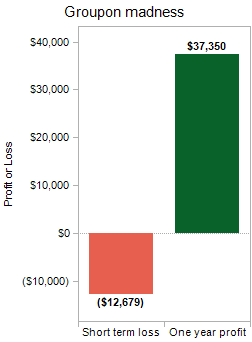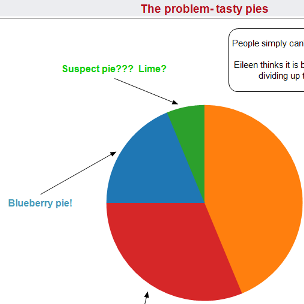 It seems that you can’t avoid Groupon in the news lately. Consumers are mad about using Groupon since they can find great deals at often unheard of discounts. Even for customers, there is a often a down-side with reports of customers mobbing unprepared businesses and leaving frustrated or unhappy with the experience.
It seems that you can’t avoid Groupon in the news lately. Consumers are mad about using Groupon since they can find great deals at often unheard of discounts. Even for customers, there is a often a down-side with reports of customers mobbing unprepared businesses and leaving frustrated or unhappy with the experience.
My review of multiple profit estimates shows that without a high rate of repeat business, your Groupon gains will likely end up as a big loss! However, if you can handle the volume of business and are considering offering Groupon at your business, you should download my spreadsheet to estimate the short and long term profitability of your participation.
1) The example used in the spreadsheet is based on a local restaurant. Their standard entree cost is $32.55 with the Groupon deal offered at $14.79. The fee to Groupon is half of the $14.79, leaving the business with $7.40 to cover $8.90 in marginal food and staff costs.
